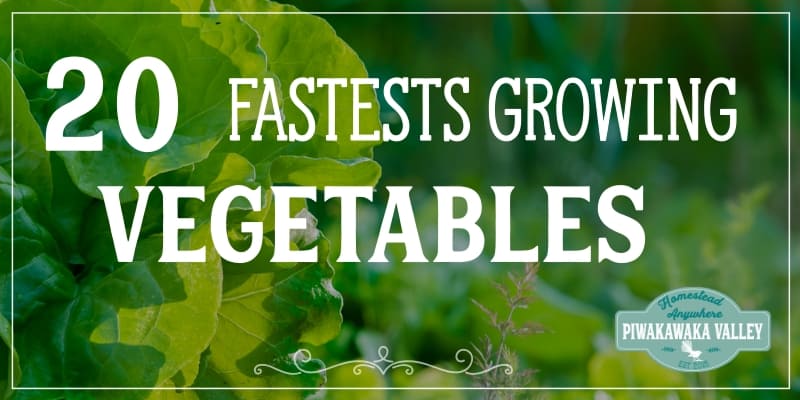This post was most recently updated on April 1st, 2021
If you’re like many homesteaders, you love the idea of being independent and self-reliant. And chances are you have a true “do-it-yourself” attitude. You’re excited about gardening or raising animals to feed your family.
Please read: This information is provided for educational purposes only and is not intended to treat, diagnose or prevent any disease. We encourage you to make your own health care decisions in partnership with a qualified health care professional.
This post contains affiliate links, this means at no extra cost to you, we make a commission from sales. Please read our Disclosure Statement
Perhaps you’re building your own cabin, homesteading and homeschooling your family, or you’re eager to craft your own furniture or clothing. Yet it’s easy to overlook one important part of self-reliance: financial independence.
Yes, you may feel that harvesting a garden, milking a goat or collecting eggs for the first time is a little more fun than cutting costs, building budgets and figuring finances.
Yet taking care of your money matters does more than just let you become more self-reliant. It can also reduce your stress, simplify your life, and let you focus your attention on living life the way YOU want to.
Today I welcome Sarita from An Off Grid Life, she has kindly written the advice for us.
Learn what to start doing right now to become a more financially self-reliant homesteader.
1 Build an Emergency Fund for Your Homesteading Family
You’ve likely already heard of an emergency fund – sometimes it’s called a slush fund, or a rainy day fund, or even just savings. And while your emergency fund is built with money you’ve saved, it’s important to keep it separate from other savings – such as retirement savings, or your children’s education funds.
That’s because an emergency fund is to be used ONLY for unexpected expenses.
An Emergency Fund Helps You Be More Financially Self-Reliant
An emergency fund helps you become more financially self-reliant because when your homestead dreams lead to tractor bills, vet bills, or unexpected off grid costs (yes, they’re a thing) you’re ready.
You don’t need to depend on someone else to foot the bill. No racking up high-interest charges on a credit card. No panicked applications for a temporary loan or credit line. No borrowing from family members.
Wondering how much to save? Although opinions vary, CNBC recently reported many experts suggest an emergency fund should include approximately three to six months of living expenses.
Where to Get Money for Your Homestead Emergency Fund
That’s all well and good, you may say, but just where is that money to come from? Luckily, today you’ll find literally thousands of articles online with many money saving tips.
And your homesteading mindset and skills will come in handy to reduce costs and generate income to start building your emergency fund.
Take an online homesteading course to explore a new DIY, self-reliance, artisan craft or homesteading skill that will save you money. For example, learn to grow a productive garden that will feed your family and cut your food bill. Then apply that savings to grow your emergency fund.
And if you’re looking for some creative ways to cut costs to build emergency savings (or other savings), check out the 27 million cost-cutting hints on the Simple Savings Site. Or jump-start your homestead emergency fund with your tax refund – especially if you qualify for a homestead and mortgage exemption.
Easy Access to Your Funds
Remember to keep your emergency savings easily accessible and safe. So don’t put it into a tax-sheltered account where a withdrawal would trigger an income tax payment.
Don’t select a volatile investment where your principal (the amount you contribute) may fluctuate. If you have a financial emergency, the money should be readily available – a cash account, even a high-interest savings account.
In times of low-interest rates on savings accounts, you may hear the advice to forego emergency savings and use a credit line or credit card instead should unexpected expenses pop up.
But then you aren’t really financially self-reliant, are you? You’re depending on a bank or financial institution to give you access to money in times of trouble. You’ll have to pay them back on their terms (with interest), instead of your own should you dip into your emergency fund.
2 Pay Off Your Debt to Become More Financially Self-Reliant
Financial self-reliance includes paying off your debt. Debt is the money you owe. It could be owed on credit card, credit lines, loans, outstanding tax amounts, and even mortgages (although in some places and situations there’s a tax advantage to having a mortgage on an income-generating homestead.)
Why pay off debt, you ask? Let me put it this way: do you really want to be at the mercy of lenders? Do you want to pay hundreds of dollars interest to banks or financial institutions for the money you borrowed on a credit card or loan? Wouldn’t you rather invest that in your emergency fund, your homestead, your cottage business, or your retirement?
When you pay off your debt, you’re no longer beholden to lenders. You are immediately in a more independent financial position.
If you owe money to more than one lender, it can be tricky to know who to pay off first. There are several different schools of thought on this.
One way is to pay off the credit account or debt with the highest interest rate. Another is to pay off the debt with the smallest balance, the idea being you’ll be motivated and inspired to continue paying off your other debt when you successfully pay off that first account.
Learn the best ways to pay off every kind of debt, then get started. Whichever method you choose, make sure that once a debt has been paid off, you start applying that same payment amount to the other debt you have – do NOT spend it!
RELATED: Make money homesteading
3 Reduce Paycheque Dependence – Start a Business
Does your family depend on an employer for income? Become more financially self-reliant by reducing your dependence on that outside income.
Because when you’re an employee, you’re relying on someone else to put money in your pocket. Instead, become less reliant on a paycheque and take charge of your family income.
One way to do this is to produce an income yourself by starting a business. Admittedly, this is a big responsibility – especially if you have a family to support.
Yet the same “can-do” attitude that attracted you to homesteading in the first place can also help you launch a homestead business that leads to financial independence. Yes, you can literally make money from your backyard!
While you may love the idea of selling eggs, raising livestock to take to market, or operating an artisan crafts business from your homestead, also consider starting a side hustle or business based on your professional qualifications or career.
You may already have the experience and contacts to build a freelance or consulting business that could generate income more quickly.
The internet will give you many ideas on how to make money when homesteading or living off the grid. If you do decide to pursue an entirely different business – for example, a homesteading business, do it in stages. Don’t quit your job right away. Or if you do, make sure your family can live on your spouse’s income while you get the business off the ground.
RELATED: How to homestead in an apartment
4 Track Expenses, Create a Homestead Budget and Stick To It
You can’t take charge of your finances if you don’t know what you’re working with. If you are going to rely on yourself to manage your household money well, the plain truth is you need to see exactly what money comes into your homestead household and what goes out.
Track Expenses With an App or Notebook
The best way to do this is to track your expenses, then create a budget. And this is true whether you’re a homesteader or not. The simple act of tracking expenses reveals unexpected spending patterns. Don’t be surprised if you discover you’re spending more on gas, groceries, or chicken feed than you thought.
Track your expenses using a free expense tracker template, a smartphone app like Wally or just carry around a little notebook and pen to jot down every penny you spend.
Create a Homestead Budget
Budgeting is such an important part of financial planning that a Google search on “how to budget” returns 1,490,000,000 hits! So you have lots to choose from when you’re ready to create a homestead budget.
Whether you prefer to use a budgeting app, a free budget template, or even an old-fashioned paper budget planner, the key is to set maximum spending amounts in each category, then stick to them.
RELATED: How to survive the next recession on the homestead
Budget Fixed and Variable Expenses
Make sure your budget includes fixed and variable spending categories. Fixed categories don’t change – this could be your monthly mortgage payment or even rent, for example.
However variable spending, like groceries, clothing, entertainment, and utility or fuel costs can (and do) change.
When you identify and track your variable spending items, you’ll get a few ideas about where to stop spending and start saving. You’ll feel more confident in setting a weekly or monthly budgeted amount to stick to. And don’t forget to add your ongoing homestead-specific expenses such as livestock expenses, animal feed and seed, and gardening costs.
Homesteading is not for the faint-hearted. And neither is taking charge of your finances. They’re both tough to do, and yet so very rewarding.
Don’t let your financial situation be the only area of your life where you’re not self-reliant. Build an emergency fund, pay off your debt, start a business, and stick to your budget to move steadily down the financial independence path.
Sarita is a finance writer, blogger, homeschooling mom, and fledgling homesteader living off the grid in Canada’s subarctic Northwest Territories.
In her former life, Sarita was a financial advisor who helped people manage their money. For more tips, tools and tricks to affording the homesteading and off grid life, drop by Off Grid Life, or join her on Pinterest, Facebook or Instagram!







